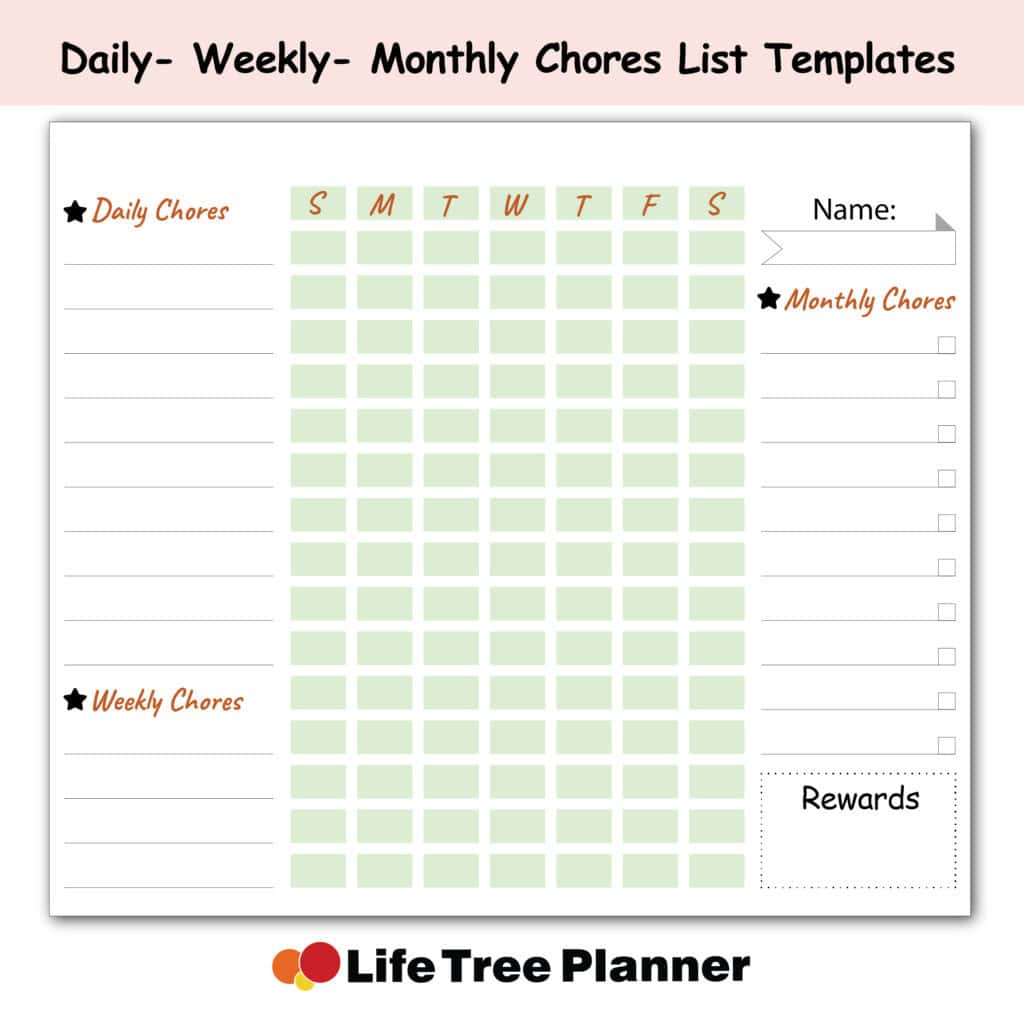
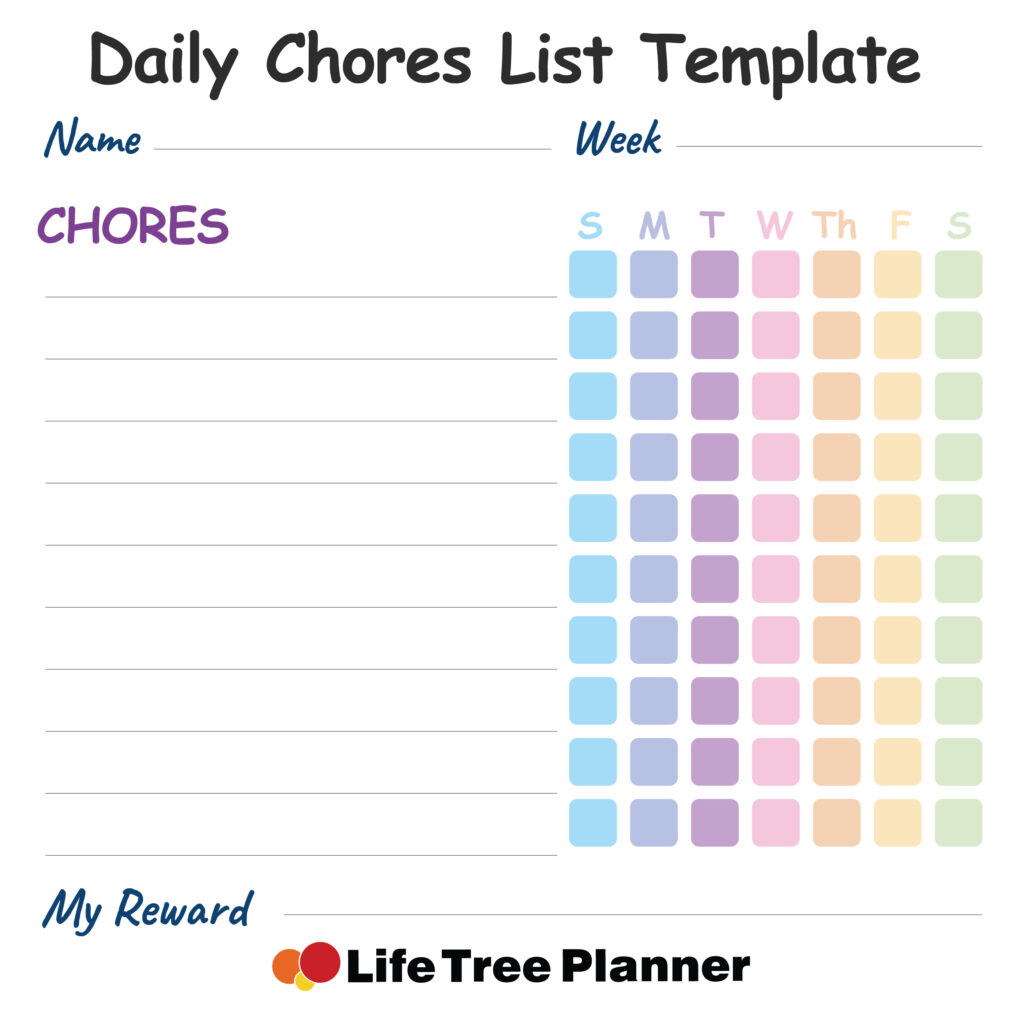
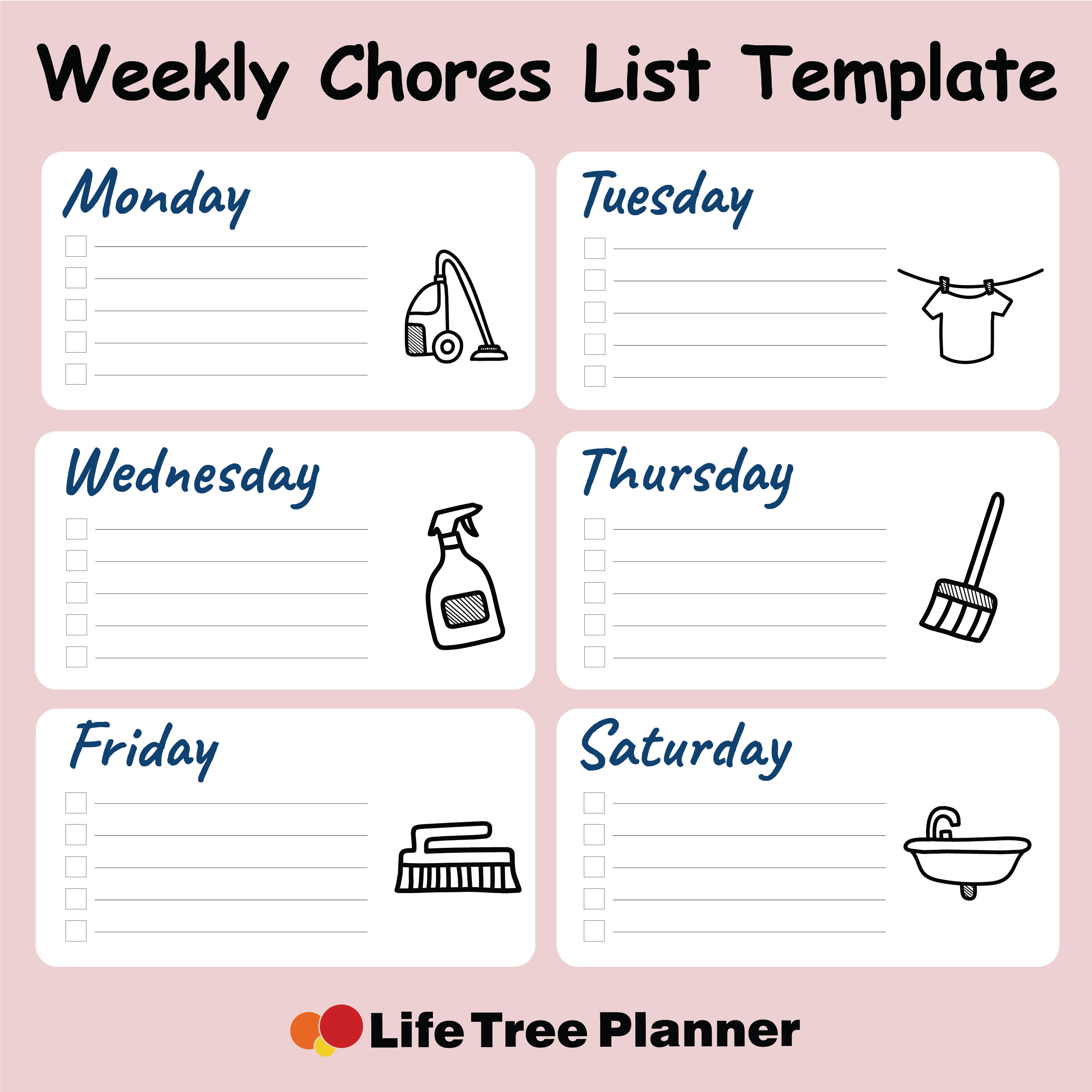
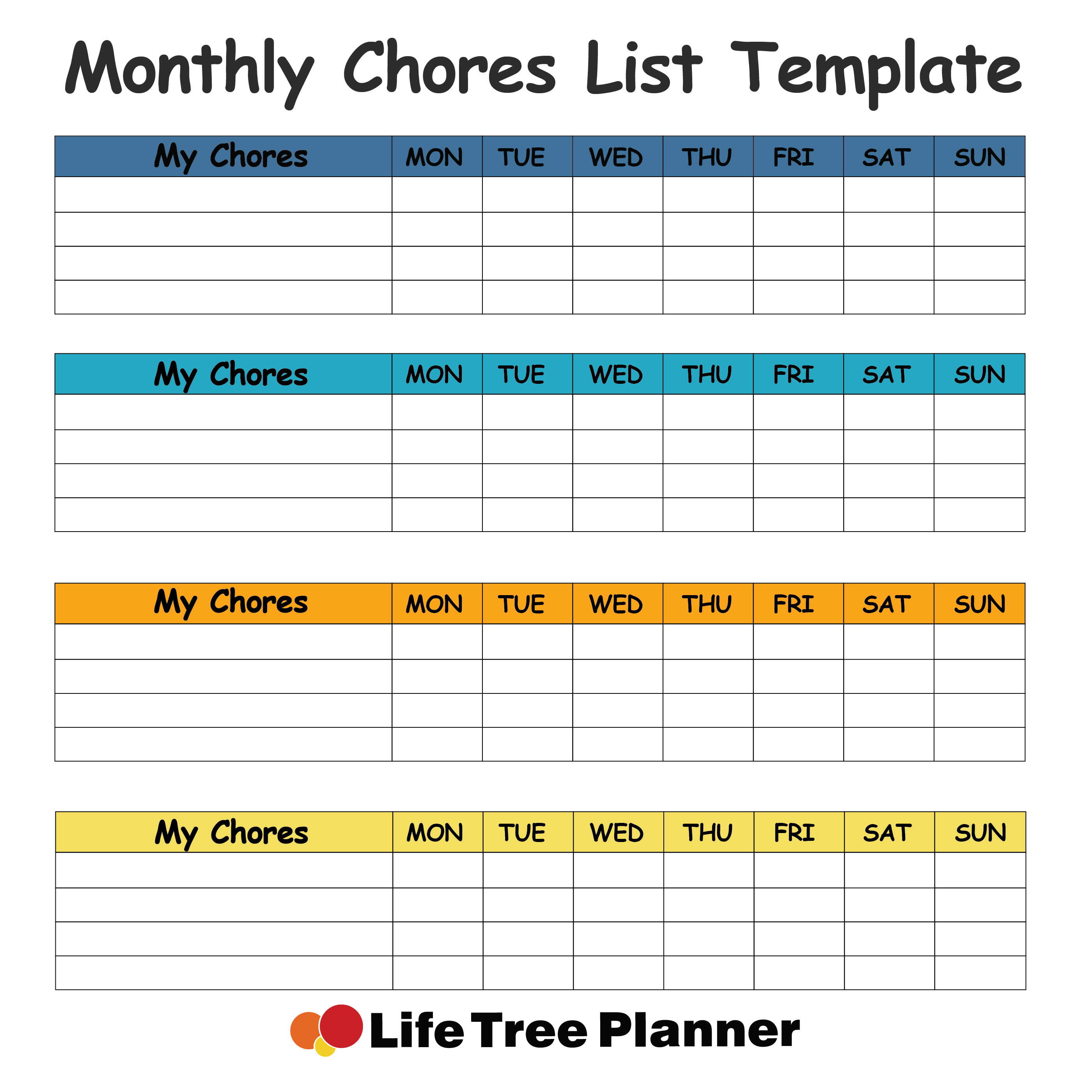
Struggling to keep your household chores organized and evenly distributed? Managing daily, weekly, and monthly tasks can be overwhelming, especially with a busy schedule. You’re not alone in this challenge—many families face the same issue.
Your ultimate tool for effective household management. By leveraging a well-structured template, you can easily assign responsibilities, track progress, and teach valuable life skills to everyone in the family.
In this article, we will explore 3 templates and how customizing a chores list template can simplify your life, reduce stress, and help the sense of responsibility within your family.
After reading this article, you’ll be equipped with the tools to follow a more organized and harmonious home today!
Ready to transform your home’s organization?
Start this article to discover how a customized chores list template can streamline your life, reduce stress, and create a sense of responsibility in children. Your path to a more organized and harmonious home starts here!
Why Use a Chores List Template?

Using a chores list template is an essential tool for effective life planning and household management. It helps families organize and prioritize daily and weekly tasks, ensuring that everyone knows their responsibilities.
For children, a family chore chart can be particularly beneficial, teaching them the value of contributing to the household. Templates allow parents to easily decide and assign age-appropriate tasks for each child.
For younger kids and toddlers, simple, visual charts make it easier to understand and track their tasks.
By using a family chore chart, parents can ensure that housework is evenly distributed, creating a more organized and stress-free home environment. These templates also help in developing good habits and responsibility in children from a young age.
Creating an Effective Chores List Template
Creating an effective chores list template involves using a printable chore chart template that clearly outlines daily and weekly chores lists. It’s key to set deadlines and organize tasks by age to ensure that chores teach kids responsibility.
Incorporating a calendar helps track progress, and a blank chore chart allows for customization. Parents can use the chore chart to encourage completing tasks while teaching life skills. Printable chore chart templates are essential tools in maintaining a balanced Life Responsibilities List.
See also Top 10 Responsibilities of a Father: Core Duties for a Dad
Organizing Your Chores Template

Organizing your chores template starts with selecting a chore chart template that suits your needs. Use a daily chore chart to track household chores and a weekly chore chart for more extensive tasks.
For kids, especially chores for 9-12-year-olds, chore chart templates help in assigning age-appropriate responsibilities.
You can easily find a free printable chore chart online to create a structured plan that ensures all household chores are completed efficiently.
1. Daily Chores Template

Here are 10 examples of daily chores:
- Making the bed: Ensures a tidy start to the day.
- Washing dishes: Keeps the kitchen clean after each meal.
- Sweeping the floor: Maintains cleanliness in living areas.
- Feeding pets: Regular care for household animals.
- Taking out the trash: Prevents garbage buildup and odors.
- Wiping down counters: Keeps kitchen surfaces clean and sanitary.
- Tidying up toys: Helps maintain an organized space, especially with kids.
- Watering plants: Ensures indoor and outdoor plants stay healthy.
- Sorting mail: Prevents clutter from accumulating.
- Preparing meals: Daily cooking responsibilities for the household.
2. Weekly Chores Template

Here are 10 examples of weekly chores:
- Vacuuming carpets: Deep cleans and removes dust and dirt from floors.
- Mopping floors: Provides a thorough cleaning for hard surfaces.
- Laundry: Washes and dries clothes, linens, and towels.
- Cleaning bathrooms: Includes scrubbing sinks, toilets, and showers.
- Dusting surfaces: Removes accumulated dust from furniture and fixtures.
- Changing bed linens: Refreshes bedding and ensures a clean sleeping environment.
- Grocery shopping: Restocks food and household supplies.
- Cleaning out the refrigerator: Removes expired or spoiled food items.
- Yard work: Mows the lawn, trims bushes, and tends to garden beds.
- Organizing closets: Helps maintain order and makes it easier to find items.
3. Monthly Chores Template

Here are 10 examples of monthly chores:
- Deep cleaning carpets: Includes steam cleaning or shampooing for a thorough cleaning.
- Washing windows: Ensures clear views and removes accumulated dirt.
- Cleaning air vents and filters: Improves air quality and HVAC efficiency.
- Checking smoke detectors: Ensures they are functional and replace batteries if needed.
- Organizing storage spaces: Includes closets, basements, or attics for better organization.
- Cleaning kitchen appliances: Thoroughly cleans the oven, microwave, and refrigerator.
- Changing air filters: Replaces HVAC filters to maintain air quality.
- Cleaning out the garage: Declutters and organizes items stored in the garage.
- Rotating seasonal clothing: Swaps out clothing for different seasons.
- Cleaning behind and under large furniture: Removes dust and debris that accumulates in hidden areas.
Customizing Your Chores List Template

Customizing your chores list template involves tailoring it to fit your family’s specific needs and schedules. Start by using life planning tools to create a blank chore chart that includes daily, weekly, and monthly chores. This helps you easily track tasks and ensures that all family members, including kids, know their responsibilities.
A weekly chore chart can be used for regular tasks, while a monthly chore chart helps manage less frequent chores. Consider creating a chore chart for kids to teach them responsibility and include their basic chores.
Customize your own chore chart by adding or removing tasks as needed. By organizing tasks efficiently, you maximize free time and ensure that chores are evenly distributed.
Here are 10 strategies for creating an effective chores list template:
- Celebrate Success: Acknowledge completed tasks and celebrate as a family to maintain motivation.
- Involve the Whole Family: Get input from all family members to ensure buy-in and fair task distribution.
- Start Simple: Begin with a basic list and gradually add more tasks as everyone becomes comfortable with the routine.
- Be Consistent: Regularly update the list and stick to a routine to build good habits.
- Use Digital Tools: Consider using apps or digital templates for easy updating and tracking.
- Assign Deadlines: Set clear time frames for when each chore should be completed.
- Rotate Tasks: Rotate chores periodically to ensure fairness and variety.
- Balance the Workload: Ensure chores are evenly distributed to prevent anyone from feeling overwhelmed.
- Communicate Clearly: Make sure everyone understands their responsibilities and the importance of each task.
- Incorporate Flexibility: Allow for adjustments in the list to accommodate unexpected events or changes in routine.
Benefits of Chores List Template
Here are 10 reasons why using a chores list template can benefit your household. By organizing tasks effectively, assigning clear responsibilities, and improving overall efficiency, a chores list can enhance time management, reduce conflicts, and teach valuable skills to family members, including children.
Here are 10 benefits of using a chores list template:
- Improved Organization: Helps in structuring and managing daily, weekly, and monthly tasks efficiently.
- Clear Responsibilities: Assigns specific chores to family members, reducing confusion and ensuring accountability.
- Time Management: Aids in scheduling tasks to make the best use of available time.
- Skill Development: Teaches children responsibility and time management by involving them in household chores.
- Consistency: Maintains a regular routine and ensures that chores are completed consistently.
- Visual Tracking: Provides a visual representation of completed tasks, making it easier to monitor progress.
- Reduced Conflicts: Minimizes disputes over who should do what by clearly defining roles and tasks.
- Increased Efficiency: Streamlines household management by outlining and prioritizing tasks.
- Motivation: Encourages motivation through tracking and rewarding completed tasks.
- Customizable: Allows for personalization based on individual family needs and preferences.
Tips for Updating Your Chores List Template
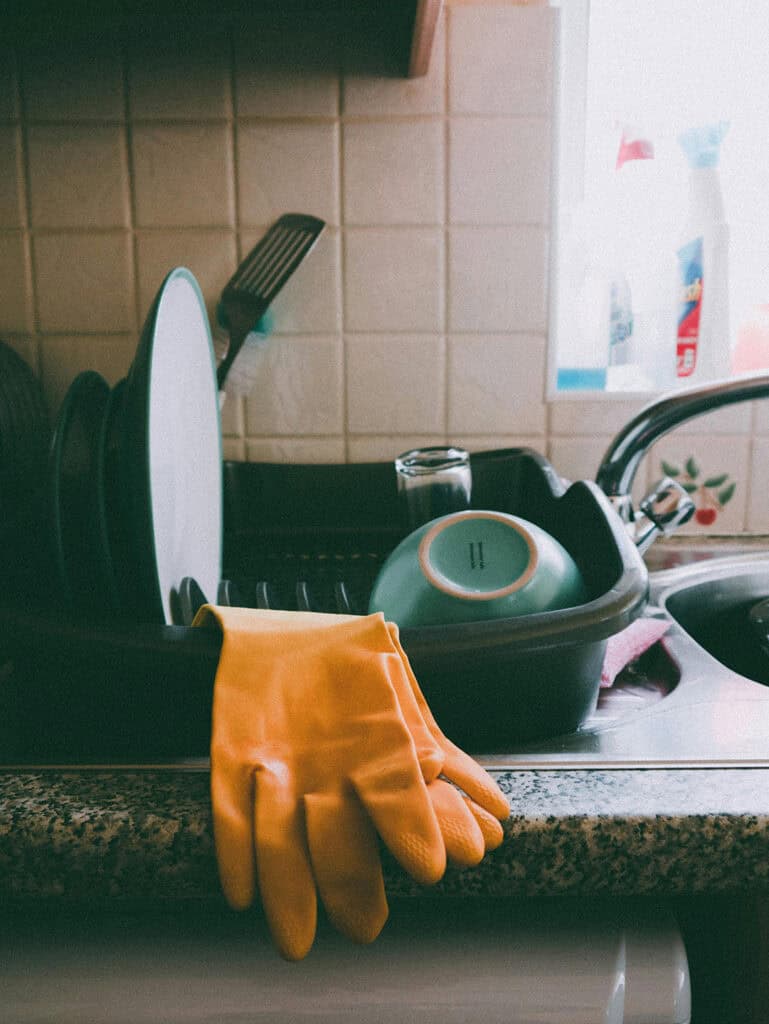
Regularly updating your chores list template is crucial for adapting to changing needs and maintaining household efficiency.
By making necessary adjustments, you ensure the list remains relevant, accommodates new tasks, and continues to cooperate among family members. This practice helps keep the household organized and manageable.
Here are 10 tips for updating your chores list template:
- Regular Review: Schedule periodic reviews to adjust tasks and responsibilities based on changing needs.
- Incorporate Feedback: Ask family members for their input to ensure the list reflects everyone’s needs and preferences.
- Adjust for Seasons: Modify the template to account for seasonal chores and changing activities.
- Track Completed Tasks: Monitor and update completed tasks to keep the list relevant and accurate.
- Add New Tasks: Include any new responsibilities or tasks that arise to keep the list comprehensive.
- Customize for Ages: Adjust tasks based on the age and capability of each family member.
- Use Technology: Consider digital tools or apps for easier updates and accessibility.
- Set Reminders: Use reminders to prompt regular updates and keep the list current.
- Simplify: Streamline the template to focus on essential tasks, avoiding clutter.
- Visual Appeal: Refresh the design to maintain interest and motivation in using the list.
See also Stay at Home Mom Responsibilities: 8 Duties and Essential Tips
Chores List Template: A Recap
Using a chores list template helps in managing household tasks efficiently by clearly defining chores vs. responsibilities. Incorporating chores for teenagers into the template not only teaches them responsibility but also enhances family bonding activities.
Free printable chore charts and chore chart templates are practical tools for organizing daily chores and weekly tasks. A daily chore chart or a chore chart for kids can be customized to fit different age groups, ensuring that tasks are age-appropriate.
By integrating these charts into your routine, you can track progress, complete household tasks effectively, and maintain a clean home. Using a chore list helps both adults and children stay organized, contributing to a well-managed household and a supportive family environment.


